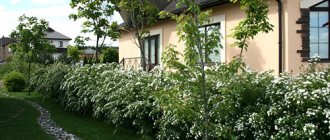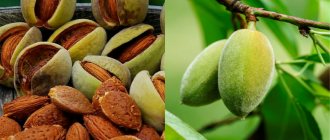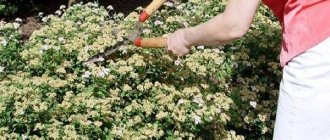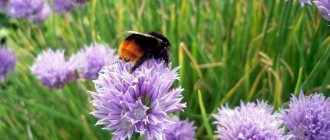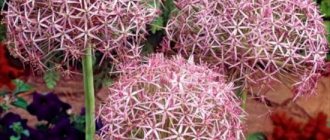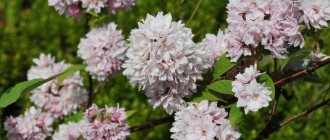Spiraea - planting and care in open ground, cultivation features
Nurseries offer several dozen species of spirea - ornamental shrubs of different sizes and flowering periods, including white-flowering ones and those with pink petals. All of them grow well in almost any soil and are very unpretentious.
Spiraea white-flowered
Selection of planting material
Several characteristic features will allow you to assess the quality of seedlings. When planting in spring, buy plants with an open root system, whose buds are in a dormant state. Such specimens will begin to grow immediately after planting. The height of the bush should not be more than 50 cm.
Throughout the warm season, you can buy and immediately plant spirea with a closed root system (in containers). The quality of planting material is evidenced by the good turgor of shoots and leaves, the absence of suspicious spots and pests on them. Depending on the variety, the size of the bush can vary widely from 20 to 50 cm.
Spiraea seedling with a closed root system
How and when to plant
It is believed that spring-flowering spirea (2-3-year-old seedlings) are best planted in the fall, then they will be able to bloom successfully next spring. Summer-flowering varieties can be planted in both spring and autumn. For spring planting, the time chosen is late March - early April (depending on the weather), and September is best suited for autumn planting.
Soil and site preparation
The location for planting holes is chosen in sunny areas. The bushes will grow in the shade, but their crown will not be dense, and flowering may not occur at all. Compost is mixed into the existing soil, which will allow you to not apply any fertilizers for a couple of years after planting the seedlings.
Note ! All weeds should be carefully removed so that their roots do not interfere with the spirea’s development of the space allocated to it.
What kind of soil does spirea like?
With general undemandingness to the composition of the soil, spirea prefers slightly acidic or neutral. Therefore, it is best to use crushed pine bark or peat for mulching. When planting, heavy soil is dug up and its aeration is improved by introducing vermiculite, coarse sand, and wood ash into it.
The nuances of growing in spring and autumn
When planting in spring, all shoots of the seedling are shortened by a third. If the bush has an open root system and is very dry, then you need to cut off half the height of the shoots. A seedling with a closed root system is generously moistened and then immediately planted.
Spring pruning of young spirea seedlings when planting
In the fall, early September is a great time to propagate bushes. Dig out the root shoots, cutting them off from the main maternal roots. You need to transplant it to a new place immediately. If the bush has not taken root well in the selected area in the spring, then in the fall, after the leaves fall, it is dug up and planted in another place.
Important! In September, old bushes are also divided in order to rejuvenate and plant them around the garden.
Peculiarities of cultivation in Siberia, the Urals, and the Moscow region
For these climatic zones, including the Leningrad region, spring-flowering varieties are good: Vangutta, Greifsheim, willow-leaved, oak-leaved, Japanese.
The nuances of care include preparing for wintering. Low-growing shrubs do not need to be covered; they winter well under the snow. Tall spirea - in the Urals, its cultivation requires taking measures after leaf fall. The branches are bent to the ground and covered, removing the cover only after the soil thaws in the spring.
Features of growing spirea
Each plant has its own requirements for planting and care.
Growing spirea also has its own characteristics:
- Spiraea prefers leaf or turf soil. Optimal composition: one part sand and peat and two parts earth;
- a drainage layer is required; broken bricks can be used;
- spirea is planted in a hole that is one third larger than the butt of the plant;
- planting depth - at least half a meter, and the root collar of the plant should be at surface level;
- Spiraea should be planted in cloudy weather, or even better, in rain. The best time is September;
- the best neighbors for spirea are juniper, spruce, and thuja.
Shrub propagation
Spiraea Nippon - planting and care
The choice of propagation method depends on what type of spirea we are talking about. Thus, any variety can be propagated by cuttings, but hybrids cannot be planted with seeds.
Spiraea cuttings
Cuttings
This method has an important advantage: young plants retain 100% all parental characteristics. In the fall, woody shoots of this year directed upward are cut off. At least 5 leaves are left on each cutting, the lower ones are plucked off, and the upper ones are shortened in half.
Note ! You can root the cuttings in water, and when roots appear, transplant them into open ground.
The cuttings should be kept in a solution of a growth stimulator for about 10 hours. Then each lower end is dipped into “Kornevin” and planted in damp sand at a slight angle. The container with the cuttings is left in a shaded place and watered regularly until frost. A week before the final cold snap, the cuttings are planted in the ground and covered. A year later in the fall, the strongest specimens with good growth should be planted in a permanent place.
How to grow spirea with seeds
This technique has an undoubted advantage - in one sowing you can get a lot of young plants. The seed pods are cut off from the branches when slightly unripe and kept in a dry, dark place for about 2 weeks.
The spilled seeds can be sown this fall or next spring. Within 2 months, the seedlings should reach a height of 2 cm, after which they are pruned. Autumn seedlings are planted in open ground in the spring, and spring seedlings in the same fall.
Picking spirea seedlings
Features of spirea reproduction
The shrub reproduces both generatively (by seeds) and vegetatively (by cuttings, layering, dividing the bush). The first method is labor-intensive. It is used mainly by breeders when they are working on developing new varieties. When propagated by seeds, planting material is collected in the fall, sown in special trays with soil and germinated under a perforated film. Planting sprouts in open ground can be done in the spring. The soil should be well fertilized.
Generative propagation is recommended only for spireas of the first group. Hybrid varieties do not produce full-fledged seed material. To check the germination of seeds, do a test sowing
Vegetative propagation can be of three types.
Option #1 - cuttings
For it, shoots 10-15 cm long without flowers are selected, treated with a fungicidal solution, after which they are ready for planting in the ground. It is best to plant spirea indoors. The soil is moistened, water is sprayed so that the air humidity is about 85%, and the cutting is covered with film.
The film is pre-prepared - holes are pierced to allow air to enter. Place it 30-40 cm from the planted cuttings.
Option #2 – propagation by layering
The simplest and most effective method. The survival rate of seedlings obtained using layering is very high. The branches of the spirea are bent, attached to the ground and covered with soil. The branches take root quite quickly, after which they can be cut off from the bush and the finished seedling can be replanted.
Option #3 – dividing the bush
This manipulation is usually carried out in autumn or spring. If you need to divide the bush in the spring, then you should choose the period before the first buds appear. Spring propagation of spirea has both significant advantages and disadvantages.
The advantage is the plant’s rapid start to growth, the disadvantage is the increased risk of infection of the root system due to warm weather. To solve this problem, seedlings are soaked in a fungicidal solution.
Care for spirea in open ground
Spirea Grefsheim - description, planting and care
Almost all varieties have the same needs, so agricultural technology is the same for them. That is why shrubs are bought based on its appearance, having an idea of how to care for spirea.
How to water correctly
Only the youngest seedlings can have leaves and shoots dry due to lack of moisture, so in the first year, during the dry summer, the bushes are watered. Adult specimens are watered during prolonged drought, more than 2 weeks. The most moisture-loving is the Japanese spirea, for example, the Little Princess variety, so it is planted in areas where it rains often in the summer.
Japanese spirea
Fertilizer and feeding
In the garden, spirea is fed three times a year, starting from the second year after planting. If you follow this rule, the bushes will always bloom very luxuriantly.
Fertilizers are applied in the following order:
- In the spring. Nitrogen fertilizing is carried out after pruning the bush. It cannot be applied in the fall, since its purpose is to stimulate rapid growth of green mass.
- In summer. Mineral preparations, for example, superphosphate, alternate with organic fertilizers - humate, mullein, humus.
- In autumn. Phosphorus-potassium fertilizer is applied 3 weeks before frost to prepare the roots for wintering.
How to feed spirea
Fertilizers are divided into mineral and organic. Manure is great for spirea. It is diluted with water in a ratio of 1:5.
Note ! First, the bushes are watered with clean water (1 bucket per bush), and then only solutions with fertilizers are poured under them so as not to burn the roots.
Superphosphate in granules can be scattered over the surface of the soil under the bush. Typically, 5-10 g of fertilizer per plant is used at a time. Nitrogen fertilizing can be applied in the form of ammonium nitrate, which is diluted with water in the proportion: 30-40 g of fertilizer per 10 liters of water.
Description of willow spirea
Spiraea Salicifolia is a shrub that grows up to 2 m. The second name of the crop is gray spirea. According to the description, it has pointed leaves that grow up to 10 cm. The color on top is darker than on the bottom. The branches point straight up.
Spiraea has excellent decorative properties
The plant grows quickly due to root shoots. The inflorescence includes many small flowers with yellow pedicels. They form a panicle that reaches a length of 25 cm. Flowering of the crop begins 4 years after planting.
There are many varieties of the plant. These include white, pink, and Alba willow spirea (spirea Alba). In nature, the shrub is found in Eurasia. Also grows partly in North America. Bushes usually grow in swamps and near ponds, but can also be found in fields.
How to make a hedge from spirea
All varieties can be divided into low-growing and tall. Spiraea up to 1 m high (birch leaf, Japanese) produces dense low hedges that allow zoning of the territory. Tall varieties are good for obtaining dense, impenetrable fences along the boundaries of the site.
Spiraea birch leaf - description, planting
To get the desired result as soon as possible, in spring or autumn, seedlings 3-4 years old are planted in rows according to a pre-planned pattern. The rules are followed: the distance between the bushes is slightly less than their maximum height. In the future, the density is increased by cutting, stimulating the branching of shoots.
Note ! Planting that is too dense will inhibit flowering and increase the risk of diseases appearing on the shrub.
Planting spirea
Spring planting
In the spring, only summer flowering spireas are planted. The main condition for spring planting is to do it before the leaves bloom. If you buy spirea seedlings, carefully examine the roots - they should not be overdried. Check the condition of the seedling's shoots, and buy only if they are flexible and have good buds. Adjust the planting material: if the roots of the seedling have grown too much, carefully shorten them; if, on the contrary, the roots are too dry or damaged, cut off the branches. If the root system is dry during storage, spill it with water or soak it briefly in a bucket of water, and only then plant it.
How to grow vesicular carp - advice from gardeners
Spiraea is an unpretentious plant, but for long and abundant flowering, certain conditions must still be met: the site for spirea must be sunny, the soil must be fertile. In addition, spirea bushes produce abundant basal shoots, which increases the area occupied by the plant, and this must be taken into account when planning spirea planting.
In the photo: Spiraea blooming in the garden
So, in the area where the spirea will grow, you need to make a hole with strictly vertical walls, at least one third larger than the volume of the root system of the seedling. Then you need to let the pit stand for 2-4 days. On the day of planting (preferably in rainy or cloudy weather), you need to make a drainage layer of 15-20 cm from broken brick, especially if the soil is clayey, add 2 parts of leaf or turf soil and one part each of peat and sand to the hole, mix this mixture, lower the spirea roots into the hole, straighten them, cover them with soil up to the root collar and then compact them. Immediately after planting, the spirea is watered with one or two buckets of water and mulched with peat.
Planting in autumn
In the fall, both spring-blooming spireas and late-blooming ones are planted. Typically, autumn planting is combined with planting spirea by dividing the bush. This must be done before the leaf fall ends. Spiraea that are 3-4 years old are divided and replanted; older plants can also be replanted, but this is already quite difficult to do due to the large earthen lump, which is difficult to remove and wash from the ground.
Actinidia kolomikta varieties - list of the most popular
The spirea bush needs to be dug up, covering the circumference of a little more than half of the crown projection. You will probably have to cut off a few roots, but this will not cause much harm to the plant. Then the roots of the extracted bush need to be washed well. If the plant is young and not very expanded, simply place it in a container of water and let the soil acidify and settle in the water, then rinse the roots under running water while spreading them out. Cut the bush with pruning shears into two or three parts so that each section has a good root lobe and 2-3 strong shoots. Trim the cord-like roots.
In the photo: Young spirea bush
Dig a hole, place a mound in the middle, place the seedling on the mound and smooth out the roots. Fill the hole with soil and press it onto the surface. Water the planted sections with water in several stages.
Care for spirea after flowering
Early flowering varieties require pruning immediately after all the inflorescences have withered. This usually happens in mid-summer, but you can postpone the event until autumn, when, after the leaves have fallen, the skeleton of the shrub is more clearly visible.
The crown must be formed carefully. By autumn, flower buds have already formed on this year's shoots, so they can be trimmed to no more than a third of their length. In this way, tillering is enhanced and the abundance of flowering is stimulated.
Gray spirea
In gray spirea, pruning and shaping are carried out more radically, their crown shoots are shortened by half, and the old lower branches by a third. That is why it is important to know the type of bush in order to know how to trim the spirea correctly and not harm its decorative appearance.
Features of the spirea bush
Spiraea are found both quite tall (about 2.5 m) and miniature (about 15 centimeters). There is a fibrous, not very deep root system. Branches can be either erect or creeping, lying or spreading. They can have a color from dark to pale brown. The bark can peel off longitudinally. Petiolate alternately arranged leaf plates have from 3 to 5 lobes and a round or lanceolate shape. Spiraea inflorescences consist of a large number of small flowers, and they can have a spicate, corymbose, paniculate or pyramidal shape. Flowers can be painted in various color shades from crimson to snow-white. The arrangement of inflorescences directly depends on the species. Thus, there are species in which they are located throughout the stem, in others - only in the upper part, and in others - only at the ends of the branches. Meadowsweet can be propagated by layering, seeds, dividing the bush or cuttings.
This plant is great for creating hedges, as well as for group plantings. At the same time, dwarf varieties are widely used for rocky gardens, rockeries, and also for living “carpets”. Also, the meadowsweet bush looks very impressive as a single plant.
Spirea
When to trim spirea
Almost all varieties of meadowsweet have short-lived branches. In the third year of life, they already begin to dry out. At this time, they become a haven for pests, as well as a breeding ground for fungal diseases. In regions with frosty winters, annual shoots often freeze slightly. If you want to grow this ornamental shrub on your site for many years, you should know the basic rules on how to prune spirea correctly.
Note ! The main pruning is carried out in spring and autumn, but during the summer, if necessary, you should cut out branches that are broken, diseased, or dried out.
Care for spirea in spring - pruning, shaping
Spring-blooming varieties are pruned, removing too old shoots and dry twigs, and this can be done almost immediately after flowering has ended. Summer-blooming varieties from the 4th year of life are pruned in the spring, and a lot is removed at one time. In these varieties, old branches tend to lean towards the ground itself, thereby spoiling the appearance of the meadowsweet.
Note ! By limiting pruning to only the crown shoots, you can get a completely undesirable result: smaller inflorescences and thinning of the crown.
If you prune in summer by a third of the length of the shoots, this will force the remaining crown to branch. Thinning every 2-3 years will allow sunlight to penetrate deep into the bush, which will definitely have a positive effect on its health.
Anti-aging pruning is performed every 7-10 years, removing almost the entire crown and leaving only a few of the strongest and youngest branches.
Proper pruning stimulates abundant flowering
How to care for spirea in preparation for winter
In the first 1-2 years after planting, the bushes are almost not pruned, as the crown is being formed. But adult specimens need systematic pruning. In autumn, the unripe part of the shoots is pruned to the first bud above the lignified part. Inside the crown, everything that creates excessive thickening is removed, since in the absence of good ventilation, fungal diseases will inevitably appear.
Stimulating pruning is carried out after leaf fall, but before the first frost.
Important! The maximum length of the cut part of the branches is 30 cm. Only in this case will there remain a sufficient number of flower buds on the bushes so that the flowering remains lush and abundant next spring.
The deepest autumn pruning is carried out on bushes older than 15-20 years. The same is done with specimens that have been severely damaged by pests or diseases. The bush is shortened almost to the ground, leaving several shoots no more than 10 cm high.
Hedges also need autumn pruning. This increases the chances of a safe winter, and also saves time in the spring, when there is already a lot of work in the garden. The deadline for autumn haircuts is the first half of October. If we are talking about bushes with long drooping shoots in the northern regions, then after shortening they are bent to the ground and covered with agro-canvas or spruce branches.
Appearance and biological features
Plants of this genus can grow both small (up to 15 cm) and tall (up to 2.5 m). The branches of the bush are erect or creeping. The color ranges from light to dark brown. The roots are shallow and fibrous. During flowering, spirea is covered with numerous small flowers in inflorescences of different shapes. The color of the petals ranges from snow-white to crimson. Spiraea inflorescences can be located throughout the shoot, or on its upper part or at the end of the branch. The plant propagates by seeds, cuttings, dividing the bush, and layering.
Spirea does not need pruning. It is carried out exclusively for decorative purposes, to give the bushes a more aesthetic appearance. The crown of a plant can be thick and dense or slightly “sparse”, but it always looks attractive. The branches bloom right down to the ground, so there is no unsightly “bare leg” effect.
The shrub is hardy, adapts well to various climatic conditions, so it can be grown not only in the south or in the middle zone, but also in the northern regions. If the spirea freezes slightly in severe frosts, then after pruning it is completely restored and blooms in the same year. For normal development of the plant, a few hours a day of direct sun, fertilizing, and good soil are enough. You don’t have to cover it for the winter
Spiraea blooms on shoots that grow during the same year, so pruning does not spoil its appearance
Plant diseases and pests
The following pests can cause the greatest damage to plantings:
- Aphids - they are treated against them with Actellik and Kronefos in the summer until mid-August.
- Spider mites - “Phosfamide” and “Keltan” help, which are used to spray the bushes from July to August.
- Meadowsweet sawfly. Whitefly, roseate leaf roller - they are sprayed with Fitoverm as needed in the summer months.
Spiraea suffers from fungal diseases, which especially attack old bushes in cool, damp weather. For preventive purposes, the garden is sprayed with a solution of Bordeaux mixture in the spring, and the treatment with Fitosporin is repeated in the summer.
Numerous varieties of spirea are a real highlight of any garden. It is planted closer to the fence so that already at the entrance to the house you can admire the delicate and very abundant flowering of white or pink in the spring or all summer.
Types and varieties of spirea with photos
Some types and varieties are more popular, others less popular. All spirea, based on the time when they begin to bloom, are divided into spring-flowering and summer-flowering.
Spring-flowering
Such plants bloom very early. Another feature of them is their lovely flowers, which can be painted in a wide variety of shades of white. Inflorescences grow on last year's stems. Flowers begin to appear on the shoot only in the 2nd year of its life. These meadowsweet plants are distinguished by fairly strong tillering. The following types are most popular among gardeners:
Spiraea gray
This hybrid plant was born by crossing whitish-gray spirea and St. John's wort. Its flowers are white, and the plant is called gray because of the color shade of its leaves. The height of the bush does not exceed 180 centimeters. On the drooping branches there are greenish-gray lance-shaped leaf plates (their underside is gray). White flowers are part of corymbose-shaped inflorescences, which are located along the entire length of the branch. Flowering lasts from the second half of May to mid-June. The most popular variety is gray spirea “Grefsheim”. The height and diameter of the bush vary from 150 to 200 centimeters. Brown-red drooping branches form a spreading crown. Terry snow-white small (diameter up to 1 centimeter) flowers are part of umbrella-shaped inflorescences. This meadowsweet is a honey plant; its flowering lasts 1.5 months and begins in the second year of life.
Spiraea Wangutta
This hybrid plant was created by crossing Spiraea triloba and Cantonese. The bush is quite large, its height and diameter are about 200 centimeters. On the drooping branches there are three-lobed, bare, jagged leaf plates, the front side of which is dark green and the back side is bluish. In autumn, the leaves change their color to orange-red. Along the entire length of the branches there are a large number of hemispherical inflorescences, which include white flowers with a diameter of 6 mm. Flowering in the second half of June; it happens that re-blooming occurs in August.
Spiraea nipponensis
Homeland is the island of Honshu. The height of the bush with a dense spherical crown reaches 200 centimeters. On horizontally located branches there are leaf plates up to 4.5 centimeters long; they remain green until late autumn. Flowering begins in the first days of June and lasts about 3 weeks. Corymbose-shaped inflorescences consist of greenish-yellow flowers of a centimeter in diameter. Interestingly, the buds are purple.
Spiraea arguta
This meadowsweet blooms earlier than all spring-blooming ones. The spreading and very spectacular bush reaches a height of 150–200 centimeters. During flowering, its drooping branches are completely covered with a huge number of snow-white fragrant flowers, which seem to flow through them. Flowering begins in the last days of May and lasts about 3 weeks.
Summer flowering
The inflorescences of such plants grow on the tops of young shoots. Old shoots left over from that year dry out over time. Varieties of Japanese spirea represent the majority of summer bloomers. Most often, the flowers are pink, but can be pinkish-red or red. The most popular types:
Spiraea japonica
Young shoots with felt pubescence look very impressive; as they age, they become naked. The bush can reach 100–150 centimeters in height. The underside of the oblong ovoid leaves is painted bluish, and the front side is green. In autumn they turn red, yellow or purple. Flowering lasts about 1.5 months. Corymbose-paniculate inflorescences consist of pinkish-red flowers that grow at the ends of the stems.
The most popular varieties:
Spiraea japonica Little princesses
The rounded crown reaches 120 centimeters in diameter, and the height of the bush is 60 centimeters. The dark green leaf blades are oval in shape. Pinkish-red flowers with a diameter of 3-4 centimeters are collected in corymbose-shaped inflorescences. This slow-growing plant blooms in June-July.
Spiraea japonica Golden princesses
This is a variation of the previous variety. Its difference is in the meter height of the bush and yellow leaf plates.
Spiraea japonica Shirobana
The height of the bush is from 60 to 80 centimeters, and the diameter of its crown is 120 centimeters. The two-centimeter dark green leaves have a narrow lanceolate shape. Flowering begins in July or August. Flower color is pink or white.
Spiraea japonica Goldflame
The bush reaches a height of 80 centimeters. Its orange-yellow leaves gradually acquire a rich yellow color, then yellowish-green, and in autumn they become copper-orange. The small flowers are pinkish-red.
Spiraea japonica Crispa
The spherical crown is slightly larger than 50 centimeters, and the height of the bush is 50 centimeters. There are a large number of erect stems. Flat umbrella-shaped inflorescences reach 5.5 centimeters in diameter; they consist of small light pink flowers, tinged with purple. Flowering begins in July and lasts 6–8 weeks.
Spiraea Boumalda
This hybrid plant was obtained by crossing white-flowered and Japanese spirea. A bush with erect stems reaches a height of 50–80 centimeters. In autumn, green leaves change their color to purple, red or yellow. Flowering lasts approximately 2 months and begins in July. The flowers can be painted in various shades from dark to light pink. The most popular variety is the spirea Bumalda Goldflame. The height of the bush is 80 centimeters. Young leaf blades have an orange-bronze color, gradually they become golden-yellow and then greenish-yellow. And in autumn they turn reddish-copper. However, these changes are observed if the bush grows in a sunny area, and in a shady place its foliage is green.
Spiraea looseleaf
The height of the bush reaches 200 centimeters. The upright stems are yellow-brown-reddish in color. The length of the pointed leaf plates is approximately 10 centimeters. The length of the paniculate-pyramidal inflorescences is approximately 20 centimeters. They contain pink or white flowers.
Spiraea douglas
The height of the bush is about 150 centimeters. On the surface of its straight brownish-red shoots there is pubescence. The length of the oblong-lanceolate leaf plates varies from 3 to 10 centimeters. Narrow apical pyramidal-paniculate inflorescences consist of dark pink flowers. Flowering begins in July and lasts 6 weeks.
Spiraea Billarda
This hybrid plant is obtained by crossing the willow spirea and Douglas. The bush reaches 200 centimeters in height. The length of its broadly lanceolate leaf blades is 10 centimeters. Narrow paniculate-pyramidal inflorescences reach 20 centimeters in length and consist of rich pink flowers. Flowering begins in the second half of July.



